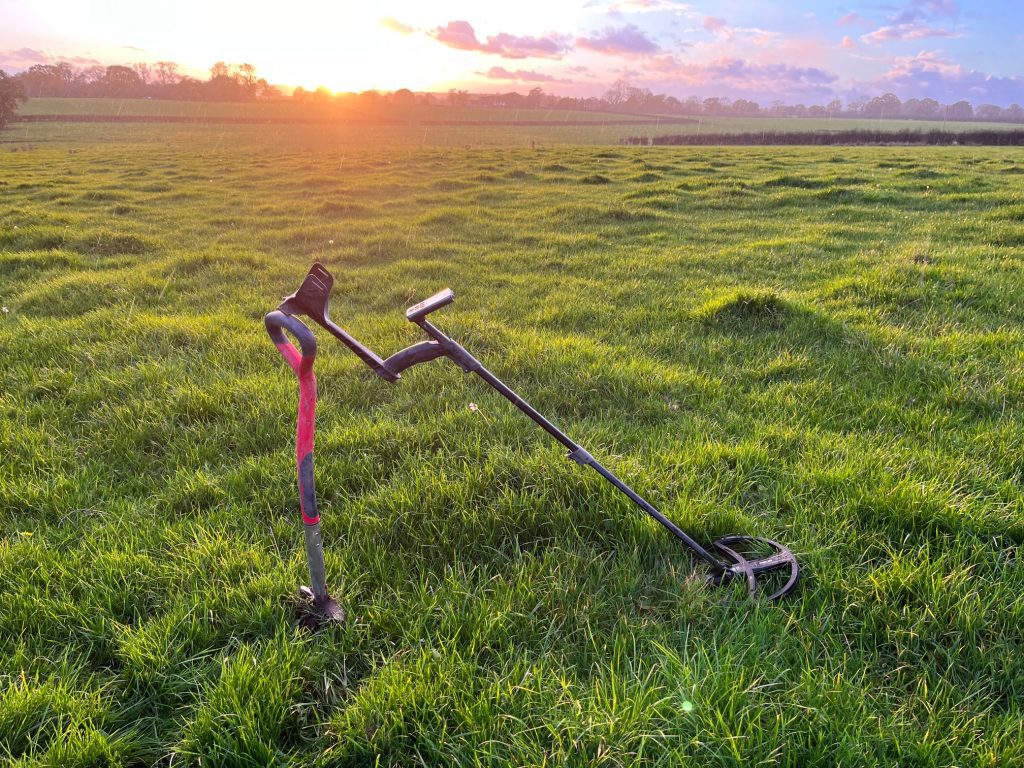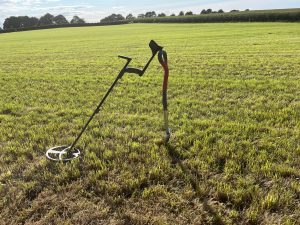
Hello, my name is Nick, I took up metal detecting almost exactly 2 years ago to the day that I am writing this. At the time I did not know if I would like it. I was very interested in history, but did I want to be digging in mud for peoples lost treasures and discarded rubbish? I soon found out that the answer was yes. The first few weeks wrecked me, my back and legs ached and by the time I got home I was cold, wet, muddy and usually smelt of sheep poo! But then I very soon became addicted to it, I quickly replaced my starter metal detector with something better and now rarely a week goes by without me getting out there detecting, no matter what the weather. So if you are interested in my story and to see what I find then please read on, and keep coming back for more.
This is just my look and take on metal detecting in the UK. Of course visitors from anywhere in the world are welcome to join me as I discover traces of England’s past, field by field. I will write about my days out detecting, both good and bad. publish items about my best finds (should there ever be any!) and review and recommend metal detecting gear and accessories. So why not join me, you just never know what I might find next.

If you like my content and want to see more, why not subscribe using the subscribe option at the bottom of the page. It doesn’t cost you anything, it just means that I can email you to let you know when I publish a new post or article. Thanks
“Swing, Beep, Dig, Repeat” encapsulates the essence of metal detecting, a popular hobby and method for uncovering hidden treasures beneath the ground. Let’s break down each element:
Swing:
- Action: Metal detecting involves a swinging motion of the detector’s coil over the ground.
- Purpose: The swinging motion ensures that the detector’s coil covers a larger area, increasing the chances of detecting buried objects.
Beep:
- Action: When the metal detector detects a metal object beneath the ground, it emits an audible signal, commonly referred to as a “beep.”
- Purpose: The beep indicates the potential presence of a metal object, prompting the detectorist to investigate further.
Dig:
- Action: Upon hearing the beep, the detectorist uses a digging tool, such as a trowel or shovel, to excavate the soil.
- Purpose: Digging is a crucial step to reveal the hidden object, allowing the detectorist to inspect, identify, and retrieve it.
Repeat:
- Action: After digging and examining the detected object, the detectorist repeats the process by swinging the detector, listening for beeps, and digging when necessary.
- Purpose: Metal detecting is an iterative process where the detectorist continues to scan the area, responding to signals and recovering items of interest.
The Cycle:
- Discovery: The cycle of swing, beep, dig, and repeat continues until the detectorist discovers various items, which can range from coins and jewelry to historical artifacts.
- Learning and Refinement: With each repetition, detectorists learn more about their equipment, the signals it produces, and the types of items they are likely to find in specific locations.
Tips for Success:
- Patience: Success in metal detecting often requires patience and persistence.
- Knowledge: Understanding the detector’s signals, the local history of an area, and applicable regulations enhances the likelihood of finding interesting items.
- Responsible Digging: Detectorists adhere to ethical guidelines, ensuring responsible digging practices and respecting the environment.
“Swing, Beep, Dig, Repeat” captures the rhythm and routine of metal detecting, where enthusiasts explore the ground’s hidden mysteries one swing at a time. The anticipation of each beep and the thrill of discovery make this hobby both enjoyable and rewarding for those who partake in it.




